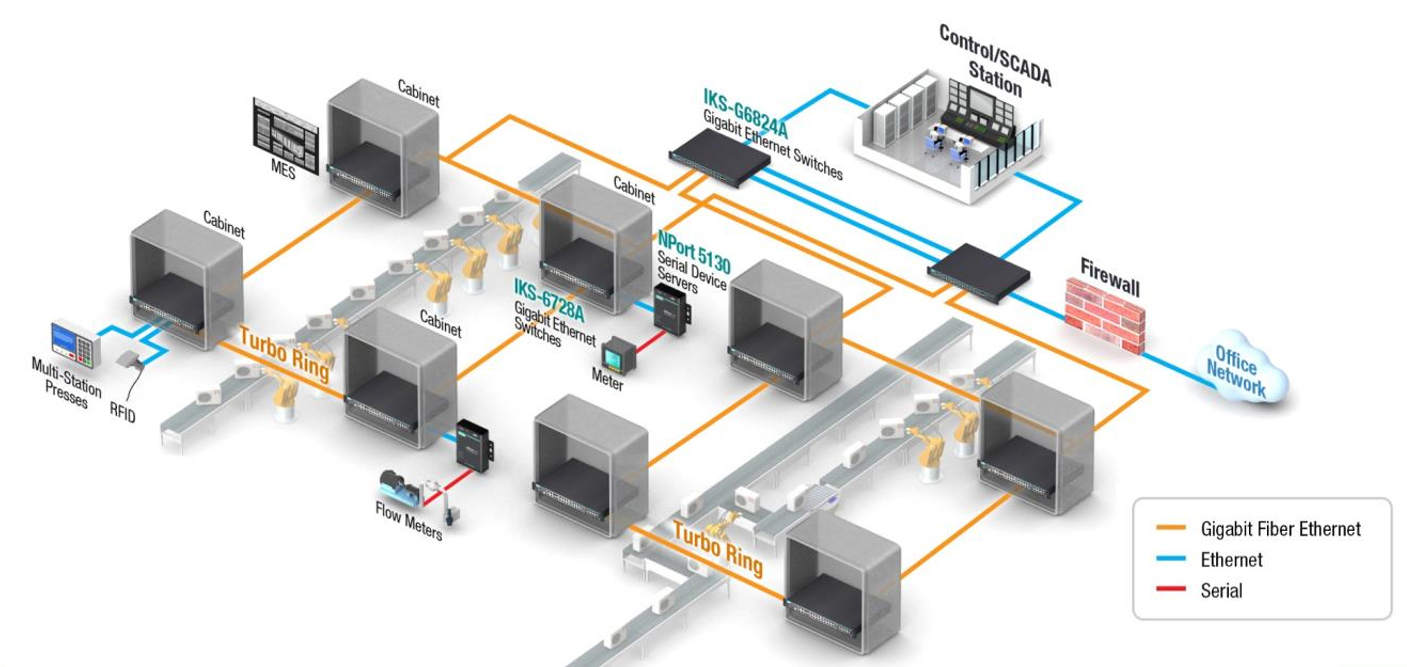Introduction
Interconnected Things Is Advancing in Ways We Experience
More and more modern-day consumers want products that are customized and available on demand. In order to create these types of customized products with the agility and responsiveness to sustain profitability, a leading home appliance manufacturer has undertaken to achieve precise and efficient mass customization by building an interconnected factory, which involves a multitude of connections between smart machines and production lines in both the physical and cyber world. These connections allow the manufacturer to enhance the customer’s experience by transitioning from a supply-centric service to a user-centric service.
The following example illustrates how production is driven by customer needs:
Customers can design their own appliances which incorporate their style, color, and function preferences. Based on the customized order, the interconnected factory set in motion its manufacturing process automatically, conveying the information to the production line of each process, module makers, and logistic carriers to schedule the equipment, materials, and modules for each production line. Each customized order has to be synchronized with the schedule of each production line. At the same time, customers can check the status of their customized appliances directly.
To enable mass customization, the interconnected factory needed to transmit data seamlessly from the Manufacturing Execution System (MES) to the production line. For the MES to control an accurate manufacturing process, it has to know the production operation of each customized order, meaning that it has to know which part is where, where what part has to go next, and what has to happen once the part is there. However, the home appliance manufacturer experienced high packet loss for almost a year, which caused a discrepancy between their planned production process and actual production process, so the product did not know which process to go to next. It took a heavy toll on their human resources to address this problem, which ultimately impacted the customer experience negatively.
System Requirements
- Reliable network connectivity to realize high precision machine-to-human interaction with zero-distance experience for personalized customization
- A solution that allows operators to pinpoint the failures of networks
Moxa Solution
Reliable Data Transmission to Ensure Data Completeness
The high packet loss happened because of a high number of environment interferences and extreme temperatures, which the customer’s existing commercial-grade solution could not withstood. As the application required data completeness in order to optimize production, losing communications for a few seconds was not acceptable. Moxa’s industrial Ethernet switches are designed with -40 to 75°C wide operating temperatures and are EMI/EMC certified. In addition, Moxa’s redundancy technologies are designed to protect networks against transmission failures. Moxa’s Turbo Ring provides an efficient way to build a reliable and flexible network to ensure high availability and support unlimited redundant network expansion. Ring topology is a very popular and cost-efficient way to build a network and is recognized within the industry as being one of the most effective solutions to avoid network downtime. Also, Moxa’s Turbo Ring technology guarantees gigabit Ethernet networks a recovery time of under 50 ms.
In order to eliminate network failures easily, Moxa’s industrial network management software (MXview) provides an integrated management platform, which makes it easy to discover and visualize the physical network topology, and therefore helps to reduce administrators’ stress levels with regard to the possible mishandling of device status or interconnectivity in the network. MXview can discover networking devices and SNMP/IP devices installed on subnets, and the live-view topology map and historical event database let you check the health of your network and identify problems when troubleshooting—anytime and anywhere via web browsers such as Internet Explorer and Firefox.

Why Moxa
- A recovery time of under 50 ms when network failures occur
- An industrial-grade design enables smooth operation in environments with a high number of interferences (e.g., EMI/EMC) and extreme temperatures (e.g., -40 to 75°C)
- Easy configuration, monitoring, and diagnosis of networking devices via network management software